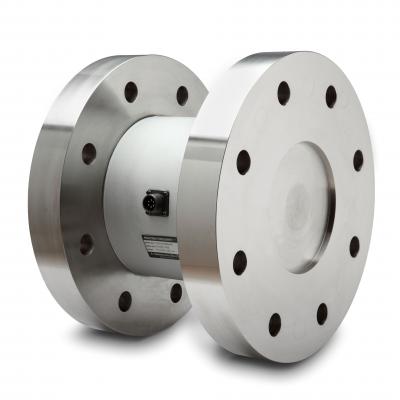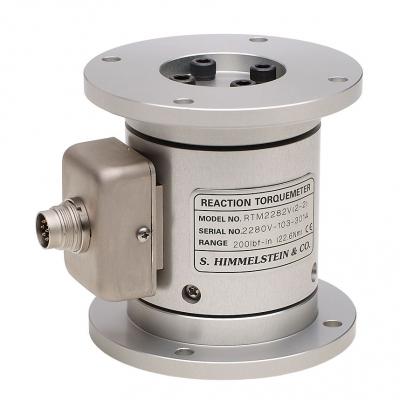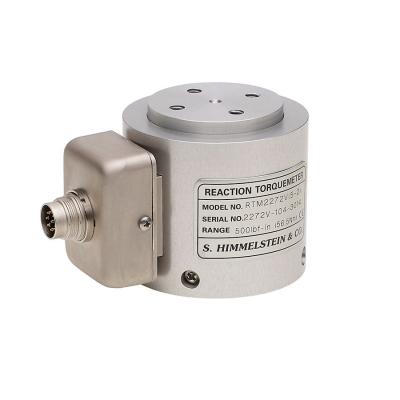Reaction (non-rotating) Torque Sensors will accurately measure static and dynamic torque, even though the test item may be rotating at high speed. Reaction torque measurements are based on Newton’s third law of angular motion – “when a body exerts a torque upon another body, the second exerts an equal torque upon the first in the opposite direction and about the same axis of rotation.” S. Himmelstein and Company manufactures solid reaction torque sensors with flanged mounting configuration that cover ranges from 10 ozf-in (0.071 Nm) to 750,000 lbf-in (84,735 Nm). These static torque transducers can offer an economical solution where in-line measurements are required but where angular motion is restricted.
Torque Measurement Basics
All torque transducers utilize full foil strain gage torque bridges that provide inherent cancellation of bending and thrust loads. Sophisticated temperature compensation of the bridge minimizes potential measurement errors caused by thermal variations.
Sensing elements are constructed from 15-5 PH, a precipitation hardened stainless steel with outstanding transducer properties. Low capacity models (200 ozf-in and below) have aluminum torsion elements. They handle large extraneous loads with low crosstalk. All have 200% mechanical overload ratings.
Units are calibrated CW and CCW to their full rated torque load in our ISO 17025:2017 accredited calibration laboratory. A NVLAP approved calibration certificate documenting NIST traceability is furnished.
Strengths of the Solid Flange Reaction Torque Sensor
- Easy installation, requires less axial length than that of a rotary torque sensor
- Simple mounting — no keyed shafts or couplings
- Durable — little-to-no maintenance required
- No bearings or speed limits
Applications for the Solid Flange Reaction Torquemeter
Common applications of static torque sensors include calibration, testing, and process and equipment monitoring. For example, solid flanged reactin torquemeters can be used for calibration of torque tools for tightening of fasteners in a variety of industries – such as automotive assembly, construction, mining and nuclear power plants.
In the process sector, torque can indicate a change of state in a mixing operation or provide a safety shut off feature in the event of an impeller jam. It can also provide tension control or be used as a feedback signal in extrusion, rolling or milling applications.
Torque can also serve as a monitor of machinery performance or condition. A variation in torque could signal problems with bearings, motors, pumps or gearboxes. Continuous measurement with high-precision reaction torquemeters safeguards high-value equipment against premature failure and prevents unplanned downtime.
Solid Flange Reaction Torque Transducer Options
Static torque meters are offered with various signal output configurations and levels of precision. Analog models are available with either strain gage level output of +/-2 mV/V or an amplified output of +/-10 mV/V. Newer digital models feature both analog output of +/- 10mV/V as well as digital over an integral RS232 serial interface.
Analog models have a combined linearity and hysteresis error of +/- 0.1% of range. Digital models are available in two accuracy grades, standard performance (Code N) with combined error of +/- 0.1%, and an enhanced accuracy version (code C) with combined error of +/-0.05% of full scale.
Experienced and Professional
At S. Himmelstein and Company, we’ve been measuring torque since 1960. We're known for high-quality torque measurement transducers that are easy to install and yield accurate data. Our after-sales service and support are second-to-none and our skilled employees take pride in building the best products available at their price point. Contact us today to learn more or to request a quote.




